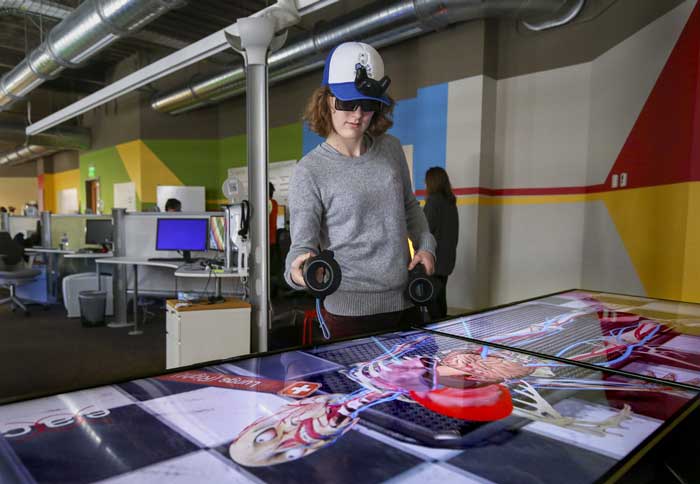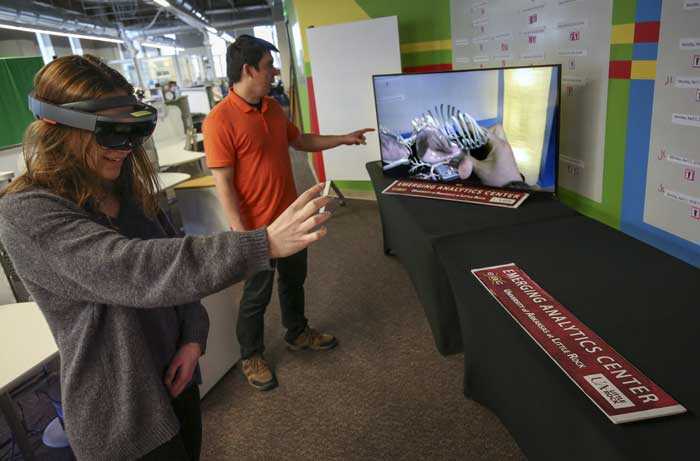Volunteers are helping bring virtual cadaver training program to life
Marisa Perry did not expect to spend part of her day dissecting a virtual cadaver, but the opportunity to help test a virtual reality medical training program intrigued her.
Perry, a freshman mass communication major at the University of Arkansas at Little Rock, was one of dozens of volunteers who helped test the Anatomic Eyes Project, an interactive cadaver program in which users can dissect a life-size cadaver using simple pinch gestures, at the UA Little Rock Emerging Analytics Center between March 26 and April 6.
“I think that it’s really cool, especially here in Arkansas, that we are moving up in the virtual reality world,” said Perry. “It’s very cool to learn about the human body in a virtual environment.”
This virtual cadaver allows users, both medical professionals in training and non-medical experts, to get a better understanding of the structure and components of a human body by replacing the experience of dissecting an actual human body with a virtual reality counterpart.
“You can use Anatomic Eyes to explore different parts of the body. It’s also much more versatile and cost effective to use Anatomic Eyes than to use real cadavers for medical training,” said Ramiro Serrano, a doctoral student in computer science who conducted the experiment. “You can also use it to explain a variety of public health issues by showing people what is happening to the body if you, for example, smoke or drink too much.”
Volunteers participated in an experiment where they performed two timed tasks utilizing Anatomic Eyes on two different devices: the VR-Table, a precision tool that enables forensic examiners to acquire data from mobile and GPS-enabled devices and other electronic units, and the Microsoft HoloLens, a mixed reality headset that allows people to engage with digital content by interacting with holograms.
The experiment is helping Serrano to make improvements in the usability of Anatomic Eyes and to discover which device is best equipped to run Anatomic Eyes. Serrano said the next phase of Anatomic Eyes is to improve the level of detail so the program may be used to help medical professionals plan complicated surgeries.
In the upper right photo, UA Little Rock student Pauline Rouillon (left) conducts an experiment overseen by Ramiro Serrano (right) at the Emerging Analytics Center. Photo by Ben Krain.

